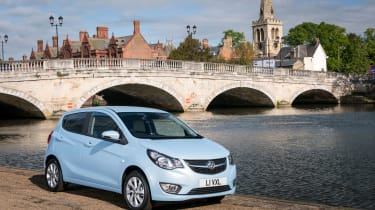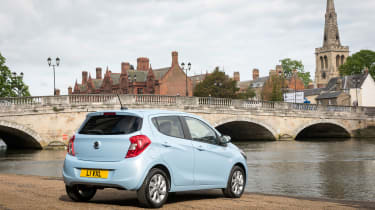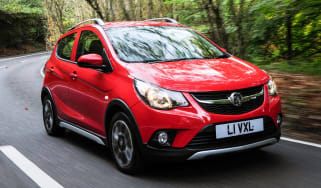Vauxhall Viva hatchback (2015-2019)
"The Vauxhall Viva is cheap to buy and run, but it struggles out of town"
Pros
- Lots of room for a small car
- Low running costs
- Cheap to buy
Cons
- Boot is pretty small
- Rivals are better to drive
- Tax-free models more expensive
Vauxhall dusted off the Viva badge for the first time since 1979 for its city car, which sits below the Vauxhall Corsa in its line-up. The old nameplate is the first of two similarities between the old and new Vauxhall Viva - the second is it’s every bit as in tune with the times as its 1960s forebear was.
Its place beneath the Corsa in the Vauxhall range means the Viva is the brand’s least expensive model, with prices starting from £10,485. It rivals cars like the Kia Picanto and Hyundai i10 in both price and size, along with the Peugeot 108 and Ford Ka+. It's not the most stylish small car you can buy; the fashion-conscious may prefer the Volkswagen Up!, Skoda Citigo or SEAT Mii, although the SUV-inspired range-topping Viva Rocks version is rather more eye-catching.
• Best city cars you can buy today
Vauxhall always intended that the Viva would be inexpensive and good value for money. The interior surfaces feel more robust and durable than imaginative or inspiring but few city cars are any more generously equipped. Even the entry-level SE has cruise control and a Bluetooth-equipped stereo with an input for portable music players, SE A/C adds air conditioning and the SL boasts a climate-control system, the likes of which you might expect to see in a much larger, more expensive car.
The Viva Rocks model, boasting SUV-inspired styling, is by far the most distinctive version in the range. It has black bumpers, wheel arches and rubbing strips, and is adorned by brushed-aluminium door sills and roof rails. The look is completed by a set of unique two-tone 15-inch alloy wheels, with special seat fabric jazzing up what is otherwise an identical interior to the regular Viva.
Keeping things simple, Viva buyers are only offered one engine: a 72bhp 1.0-litre petrol. Thanks to the Viva's compact dimensions and light weight, it feels perfectly adequate, even quite nippy – as long as you don't stray far from town. It's fairly economical, though, with up to 46.3mpg possible and CO2 emissions of 117-118g/km.
Unfortunately, as speed increases, it brings added fuss from the engine and there's a lot of noise from the tyres and rushing wind. Motorway driving doesn't leave much power in reserve for overtaking or joining fast-moving traffic, either, which makes the Viva rather tiring on long journeys. Quit the motorway in favour of a country road, though, and the Viva is far more at ease. Enthusiastic drivers will be pleased to find that the 18mm taller suspension of the Rocks makes virtually no difference to how it handles.
Of all tarmac habitats, though, the Viva is by far its happiest around town, and here it makes an extremely practical urban runabout. Its five doors open widely and allow easy access to the surprisingly spacious interior. There are seatbelts for five and adults won't be too uncomfortable on short journeys, thanks to plentiful headroom. The Viva doesn't have the biggest boot, but the rear seats fold completely flat to allow outsize loads to be carried when no more than two are travelling.
One factor in which the Viva really does lag behind rivals is in its safety rating. Originally awarded four stars by Euro NCAP in 2015, a 2017 retest to the latest, tougher regime brought that rating down to three stars. This disappointing score is partly due to a comparative lack of crash avoidance technology.
The Viva hasn't yet featured in our annual Driver Power survey, but Vauxhall finished in a lacklustre 22nd place overall, out of 26 brands surveyed, in 2018. Just under 10% of owners reported at least one fault within the first year of ownership.













